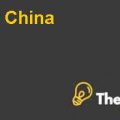
Introduction
Two Computer Science graduates of Stanford University, Larry Page and Sergey Brin started their business in the information technology industry by launching their web-based search engine. Initially, the search results were based on the number of keywords matching within pages; however later on, in order to develop the search engine and provide more relevant and extensive search results, Page and Brin developed the search engine to calculate search results based upon not only greater keyword matches but also upon the importance and relevance of other pages linked with the target page. In 1998, theyran their first database center from a bedroom. They also sought a financer and approached Yahoo! However their project did not strike the fancy of Yahoo but somehow, they managed to arrange $1 million from close family members and friends and founded Google Inc. in 1998. Next year they moved Google’s office to the University Avenue and expanded their staff. In the same year Google Inc. was funded with $25 million by Sequoia Capital and Kleiner Perkins Caufield and Buyers.
In order to provide best search results and universal accessibility of information to the world, Google Inc. introduced new search features for searching specific pictures and mail-order catalogues. Moreover to increase its revenues, Google Inc. introduced an advertisement program which boosted its revenues. In 2003 as a result of increased business growth, Google Inc. was competing with Yahoo!, eBay and Microsoft. In 2004, Google Inc. was considering to offer its share to the public through initial public offerings (IPO).
Problem Statement
Googlewas concerned about whether it would be worth going public, and if it was worthwhile then it had to decide the method to market its shares,this could be either “traditional book-building” or “sealed-bid auction”, Google Inc. should adopt for initial public offering (IPO).
Analysis
Should Google Go Public
Google Inc. is in need of funds to invest in research and development work for identification of new ways for growth and expansion ofits business and to meet the growing business expenses.Going public by offering its shares to the general public and institutional investors is an idea under consideration to access the required funds from equity market. In this regard, Google Inc. is considering two methodologies for initial public offerings which include:traditional book-building process and auctioning.
Role of Investment Banks in IPO
Investment banks provide their expertise for selection of long term investors in order to make sure that the subscribers of share will not flip the shares in after market to gain short term gains. Additionally the banks help issuer in selection of suitable new share price, selection of a share price for initial public offer is a vital step in a IPO, because if the initial share price is not on competitive price it would result in inappropriate share demand being made in the market which will affect the share price in after market.
Moreover, banks also facilitate investors in submitting their bids in auction IPO, additionally in book-building, banks act as underwriters on behalf of issuer and performs the marketing activities for the initial public offering.
Traditional Book-Building IPOs
Book-building method of launching initial public offering (IPO) involves investment banks to launch the initial public offering as underwriters. Underwriters select the issue price of new shares based on building a book using the bids received from potential investors. The process typically involves three steps which include: choosing an underwriter, meeting SEC regulations and then finally marketing the initial public offering.
Selection of Underwriter
The initial public offering processbegins with the selection of suitable investment banks in order to carry out the process of initial public offerings on behalf of the issuer.Issuer is a term used to refer to the firm looking for initial public offering. The investment banks are selected on the basis of their expertise, and ability to perform high-profile analysis of the institutional investors. Once a suitable investment bank has been identified by the issuer, then the issuer writes an intent letter to the investment bank for launching the initial public offering on behalf of the issuer as underwriter. The letter of intent is a legal document that also specifies the underwriter’s commission and gives underwriter “Green Shoe” option, a term allowing underwriter for 15% over allotment of shares.
Securities and Exchange Commission (SEC) Requirements
Once the underwriter receives the intent letter from the issuer, then underwriter analyzes the issuing company in terms of pre-requisites foroffering its shares to the public.If the underwriter is satisfied with issuer’s status then the underwriter files a registration statement as per SEC’s requirements. Meanwhile the underwriter produces the prospects, which will be used to market the share issue. Once the letter of intent is signed by both, issuer and underwriter, then they enter into a 25 days quiet period and are not allowed to alter the prospectus neither make statements regarding the future achievements of the issuer company.
Marketing Process
During the marketing process underwriter makes presentations to the potential investors regarding the issuer company, and provide them with the prospectus. Meanwhile the underwriter collects the non-binding bids from potential investors, which is a mere expression of interest and includes bid price for the shares and quantity demanded by the bidder.
Upon approval of registration statement by the SEC, underwriter and issuer decide the issue price and number of shares to be issued. Allocation of shares is at the discretion of underwriter, based on its................................
This is just a sample partial case solution. Please place the order on the website to order your own originally done case solution.











